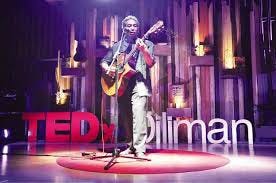Quick note on Cancel Culture, prompted by Joey Ayala's Lupang Hinirang
Issue #7
[Author’s Note]
Hello fellow Filipiniana fans,
Last week I posted Joey Ayala’s rendition of “Lupang Hinirang.” A lot of people engaged with it. Many liked it or left positive comments. Others insisted that the national anthem should be respected and only sung the “right way.” The IG post had a poll asking whether artists should be able to perform their own version of the national anthem. Roughly 3,100 people voted with a large majority (~75%) in favor of “Lupang Hinirang” covers.
What I found more interesting were the comments and IG story annotations of people pointing out that Joey Ayala endorsed and still supports Duterte. I was fully aware of the fact — after all, he has lived in Davao for most of his life. Some questioned why I posted him.
This point relates to an often discussed topic – “can you really separate art from the artist?” In my view, you can’t – because art doesn’t exist in a vacuum. But I don’t think this means cancelling personalities with contrarian or even questionable views.
For the record, I am not pro-Duterte. I am glad that he is in ICC custody and will soon be tried for his bloody war on drugs. At the same time, I saw merit in sharing Joey Ayala’s rendition even though he “sadly supports the berdugo,” as one commenter put it.
Just because he stands by Duterte doesn’t diminish the artistry of his national anthem rendition. I think the performance was commendable for its creative take on patriotism.
When I say, the art cannot be separated from the artist, I mean that when we try to appreciate or understand the value of their work, it is absolutely fine to review it in the context of their personal lives. We can say that through his art and music, he’s very nationalistic. At the same time, his political inclination reminds us that one person’s idea of nationalism – what it means to love the country (his “ang magmahal nang dahil sa iyo”) – might differ from another.
Anyway, I don’t mean to bore you with this long intro. Cancel culture is an important and nuanced topic that I likely will have to write about again in the future – especially since I will be posting a lot more Filipino artists/personalities and they’re all imperfect. But before I end this note, allow me to make an example: Spoliarium, housed in the National Museum, is one of the greatest Filipino works of art. Juan Luna is Juan Luna – revered as a great artist and national hero. He also killed his wife and mother-in-law.
My point being, things aren’t always black and white. We cannot separate art from the artist. But we can appreciate art and recognize if an artist killed people or supported killing people. Thinking about it, if our history teachers taught us that our great artists and national heroes sometimes did not-so-great things, maybe we wouldn’t always be looking for saviors.
Halina!
Roi
[🎶Music] Joey Ayala’s illegal act: singing his own version of “Lupang Hinirang”
In case you didn’t know, singing the national anthem “Lupang Hinirang” differently is illegal under Republic Act No. 8491, also known as the Flag and Heraldic Code of the Philippines. The law states that the national anthem be sung in its proper march tempo in accordance with Julian Felipe’s original musical arrangement. Violating it can result in fines ranging from P5,000 to P20,000 and/or imprisonment for up to one year.
In October 2013, Joey Ayala committed an “illegal act.” He performed his own rendition of the national anthem at TEDxDiliman.
During his talk/performance, he argued that the marching tempo of the song doesn’t reflect our culture, as nonconfrontational people who like slow, swaying music. What started as a creative songwriting exercise became a full-blown re-arrangement of the anthem we all know – edited to remove mispronunciations and completely changing its meter.
But perhaps his boldest decision was changing the iconic last line. From “ang mamatay nang dahil sa iyo” – which he argued causes “grave psychological damage” – to a more positive “ang magmamahal nang dahil sa iyo.”
If you ask me, I like both versions for different reasons – the version we know for its historic and cultural significance, Joey Ayala’s version for its creativity. But the broader question is – is it time we update the “Lupang Hinirang” or at least remove clauses of the law penalizing its “wrong” renditions? Is that being enforced anyway?
See our related posts on our socials (Instagram, TikTok).
If you enjoy Halina Filipiniana, it would mean the world to us if you invited friends to subscribe and read with us. If you refer friends, you will receive benefits that give you special access to Halina Filipiniana.


